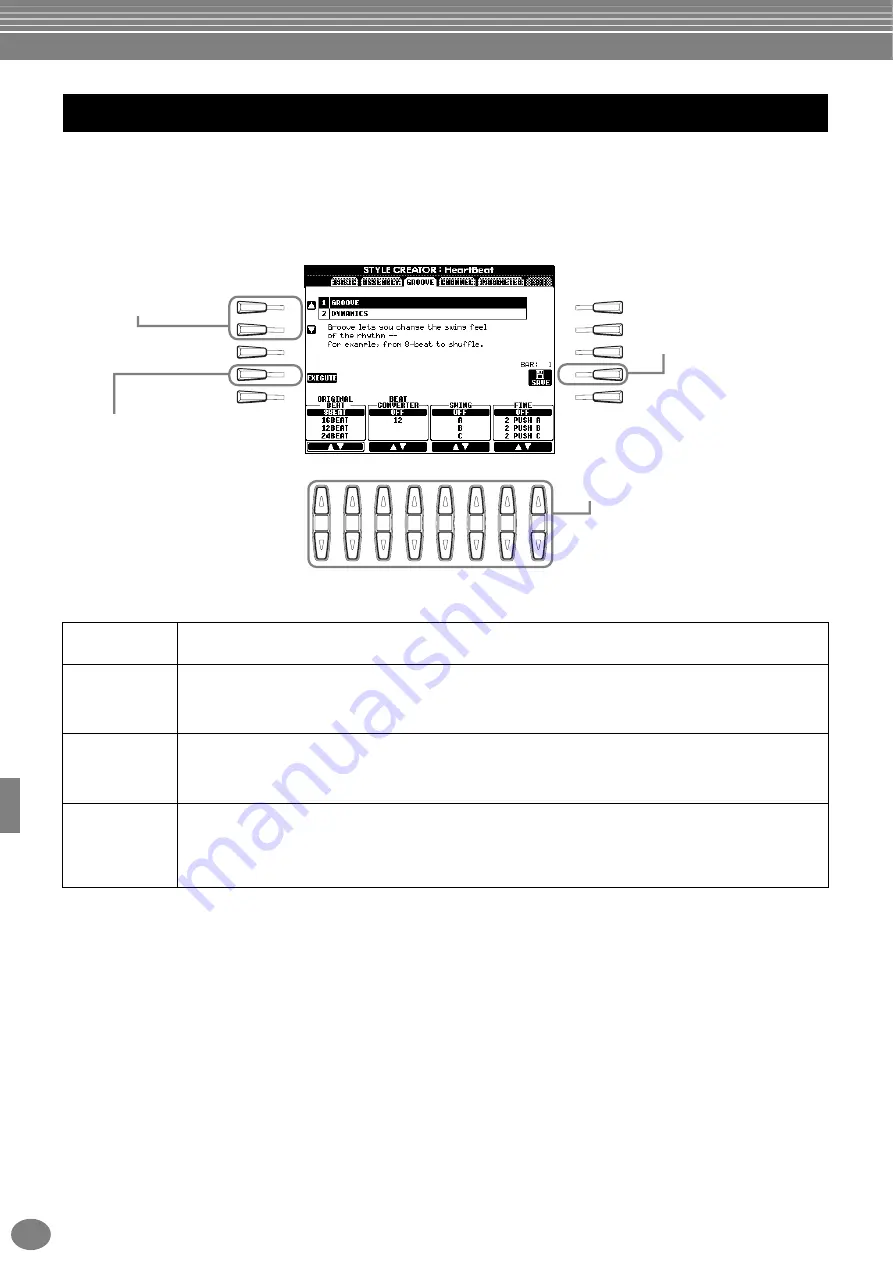
Creating Accompaniment Styles — Style Creator
PSR-2100/1100
116
Change the Rhythmic Feel — Groove and Dynamics
These versatile features give you a wide variety of tools for changing the rhythmic feel of your created accompaniment
style. The operations here apply to step 4 on page 112.
■
Groove
Groove parameters
Original Beat
Specifies the beats to which Groove timing is to be applied. In other words, if “8 Beat” is selected, Groove timing is
applied to the 8th notes; if “12 Beat” is selected, Groove timing is applied to 8th-note triplets.
Beat Converter
Actually changes the timing of the beats (specified in the ORIGINAL BEAT parameter above) to the selected value. For
example, when ORIGINAL BEAT is set to “8 Beat” and BEAT CONVERTER is set to “12,” all 8th notes in the section are
shifted to 8th-note triplet timing. The “16A” and “16B” Beat Converter which appear when ORIGINAL BEAT is set to “12
Beat” are variations on a basic 16th-note setting.
Swing
Produces a “swing” feel by shifting the timing of the back beats, depending on the ORIGINAL BEAT parameter above.
For example, if the specified ORIGINAL BEAT value is 8th notes, the Swing parameter will selectively delay the 2nd, 4th,
6th, and 8th beats of each measure to create a swing feel. The settings “A” through “E” produce different degrees of
swing, with “A” being the most subtle and “E” being the most pronounced.
Fine
Selects a variety of Groove “templates” to be applied to the selected section. The “PUSH” settings cause certain beats to
be played early, while “HEAVY” settings delay the timing of certain beats. The numbered settings (2, 3, 4, 5) determine
which beats are to be affected. All beats up to the specified beat —but not including the first beat — will be played early
or delayed (for example, the 2nd and 3rd beats, if “3” is selected). In all cases, “A” types produce minimum effect, “B”
types produce medium effect, and “C” types produce maximum effect.
Edit the Created Accompaniment Style
I
F
J
G
H
D
A
E
B
C
8
1
2
3
4
5
6
7
Use these to select the
desired edit operation.
Calls up the Style display and
lets you store the edited
accompaniment style data.
Executes the Groove operation. After
the operation is completed, this button
changes to [UNDO], letting you
restore the original data if you’re not
satisfied with the Groove results. The
Undo function only has one level; only
the previous operation can be undone.
Determines the settings for each of the
Groove parameters (see the list below).
Содержание Portatone PSR-1100
Страница 172: ...Index PSR 2100 1100 172 MEMO...






























